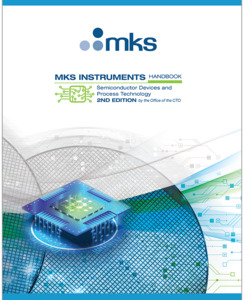Semiconductor Gas Storage and Delivery
A variety of gases are employed for different purposes within a semiconductor device fabrication plant. These gases range from the pyrophoric and/or toxic specialty gases required for thin film deposition and doping processes (ammonia, methane, silane, germane, dichlorosilane, silicon tetrachloride, phosphine, diborane, arsine and others) through the reactive and corrosive gases needed in different etch processes (chlorine, fluorine, halocarbons, nitrogen trifluoride, etc.). The so-called "atmospherics" (oxygen, hydrogen, nitrogen, argon and helium) are required for purging process systems to reduce contamination and for a number of ancillary needs in process equipment and wafer handling areas. All of the gases used in a semiconductor device manufacturing plant must be of extremely high purity at their source and this purity must be maintained throughout the gas distribution systems that exist within the plant. Some gases may also require further point of use (POU) purification to ensure ultra-low contaminant levels in critical processes.
Nitrogen and argon gases are probably the gases with the highest volumetric use in a semiconductor fab. They are normally supplied to the fab at "5 9s" purity or 99.999% pure. This purity level is necessary since high volumes of these gases are used for purging process equipment and even very low levels of contamination can produce damaging levels of cumulative contamination during long purge cycles. Other atmospherics (i.e., oxygen, hydrogen, helium) are used at somewhat lower volumes and slightly lower purity levels, which are acceptable (but all such gases must be greater than 99% pure at delivery and on-site storage facilities).
Figure 1. Typical bulk cryogenic gas storage and dispensing system.
Within the fab, gases can be stored for distribution in different ways, depending on the purpose and nature of the gas. High volume atmospherics are most often stored in large, cryogenic liquid storage tanks such as those shown in schematic form in Figure 1. These tanks are essentially just large "Dewar" vessels having an inner vessel that contains the cryogenic liquid encased in an outer shell with a high vacuum between the inner vessel and the outer shell. Vacuum is the best possible insulation to maintain the liquid at cryogenic temperatures. In addition to cryogenic storage, tube trailers are often employed for on-site storage of bulk atmospherics.
Hazardous high pressure gases include those with pyrophoric, flammable, corrosive, and toxic characteristics (e.g., silane, most hydrocarbons, fluorides and chlorides, phosphine, arsine, etc). Such gases are typically stored in high pressure cylinders that must be maintained in well-vented gas cabinets that are specially designed to mitigate the hazard associated with a specific gas. Most semiconductor fabrication plants have large numbers of such cabinets on site and there are strict regulations governing the placement and number of hazardous gases in a given facility. (See, for instance, the standards published by the National Fire Prevention Association, specifically NFPA 45, the Standard on Fire Protection for Laboratories using Chemicals). Figure 2 shows a schematic of a typical hazardous gas cabinet designed to contain pyrophoric gases such as silane. These cabinets are equipped with appropriate fittings for connection to the high-pressure cylinders and valve configurations that are designed for cross-purging piping connections to remove residual pockets of gas prior to disconnecting an empty cylinder. Modern gas cabinets are normally equipped with analytical sensors that can detect any leakage from the cylinders or piping.
Figure 2. Gas cabinets for pyrophoric gases.
In addition to bulk storage, some high usage gases may be generated on site using gas generators that are supplied, maintained and operated by the gas supplier to a semiconductor plant. On site production of nitrogen, oxygen and hydrogen is becoming relatively common within the industry.
MKS has a number of products that can be used to ensure the quality of bulk gas supplies within a semiconductor fab environment.
RGA in situ Process Monitors
The Cirrus 3 benchtop atmospheric pressure gas analysis system can be employed for on-line monitoring and analysis of gases and gas mixtures including trace contaminants in process gases.
Precisive® 5 Application-specific Analyzers
The Precisive® 5 application-specific analyzer has been specifically developed for monitoring the quality of hydrocarbon gases in the oil and gas industry, though the operating principles of this technology allow it to be adapted as a gas quality monitor in a variety of industrial settings. This includes those semiconductor process applications in which it is desirable to monitor such bulk gas characteristics as the relative proportions in gas mixtures. The Precisive 5 Analyzer is not suited to the detection of trace levels of contaminants in bulk gases.
Thermal and Pressure-based Mass Flow Controllers and Meters
MKS mass flow controllers (MFCs) and meters (MFMs) are designed to meet a broad variety of processing applications. Most MKS mass flow control and metering products offer both analog (0-5 VDC; 4-20 mA) and digital (Devicenet, Profibus, EtherCAT, RS485) I/O with embedded Modbus and an Ethernet user interface.
G-Series MFCs and MFMs are broadly applicable instruments that provide cost-effective, high performance measurement and control of gas flows between 5 cc/min (sccm) and 250 L/min (slm) with an accuracy of 1% of setpoint. They have multi-range, multi-gas capability and are available in either elastomer or metal sealed configurations.
IP66-rated MFCs are also suitable for hydrogen service in pyrogenic oxidation and annealing applications. IP66-rated MFCs are for use in harsh industrial environments.
Related Topics
Semiconductor Fab Utilities
- Semiconductor Fab Utilities Overview
- Ultrapure Water for Semiconductor Manufacturing
- Semiconductor Exhaust Gas Treatment
- Cleanroom Ultra-clean Air Delivery
Front-end Semiconductor
For additional insights into semiconductor topics like this, download our free MKS Instruments Handbook: Semiconductor Devices & Process Technology
Request a Handbook
 Ultra-High Velocity
Ultra-High Velocity